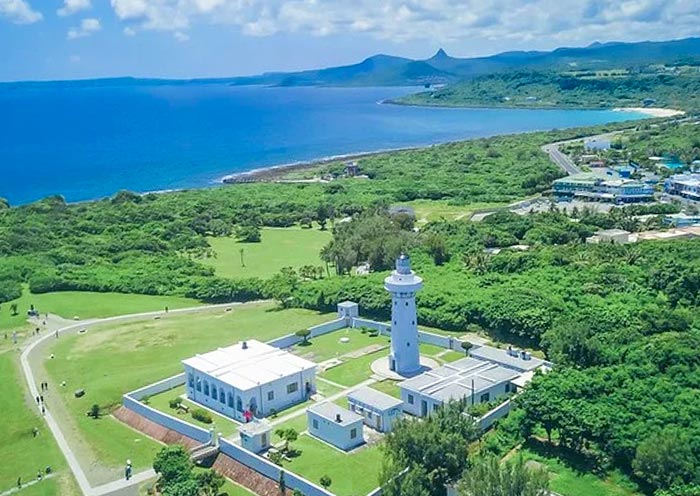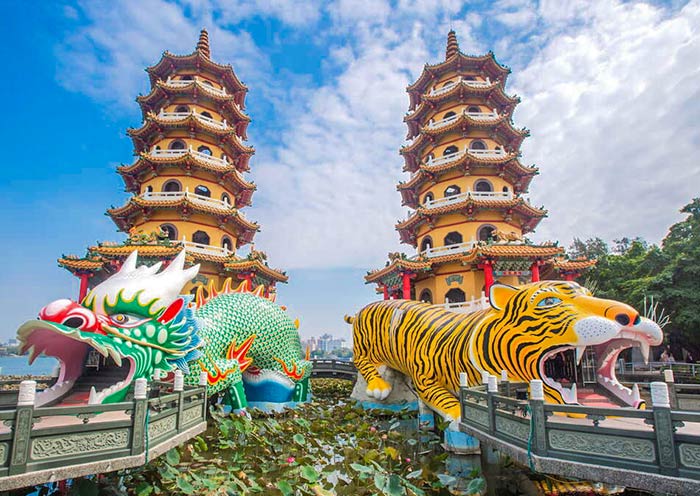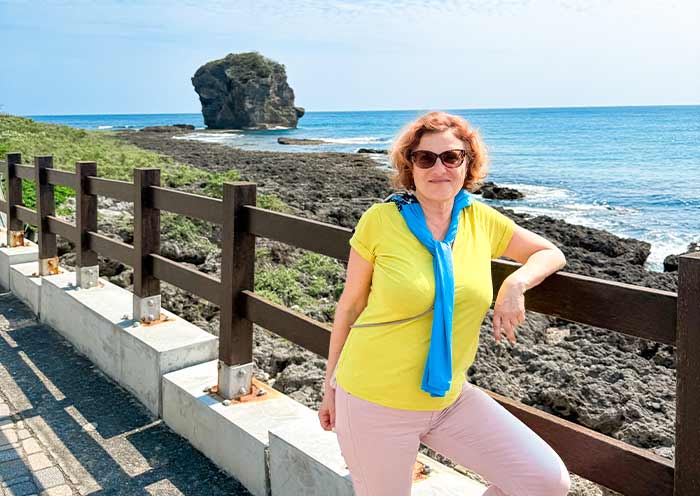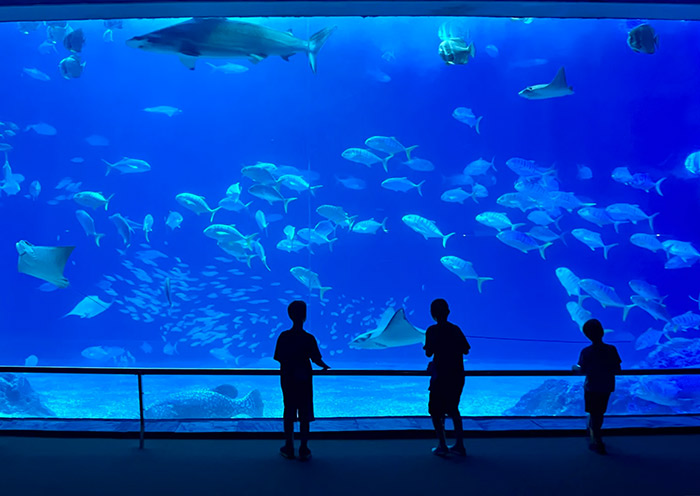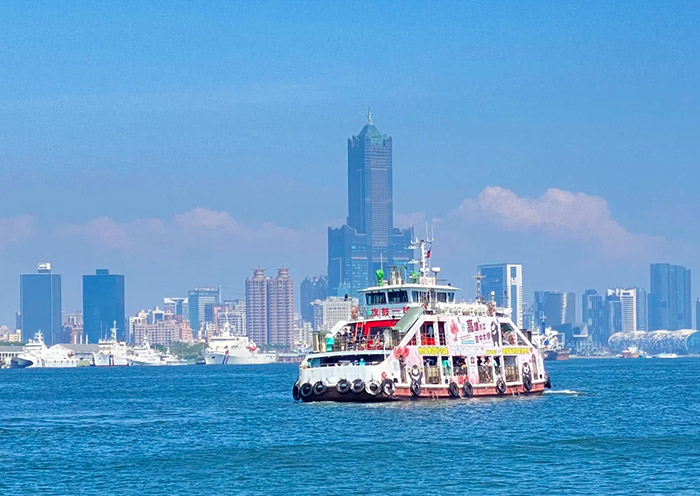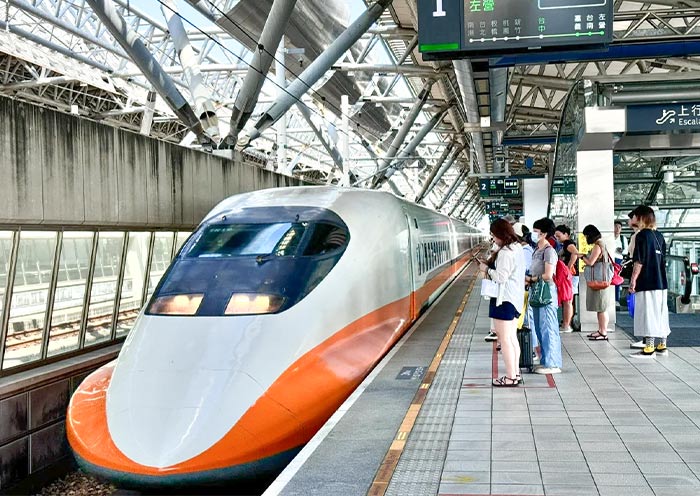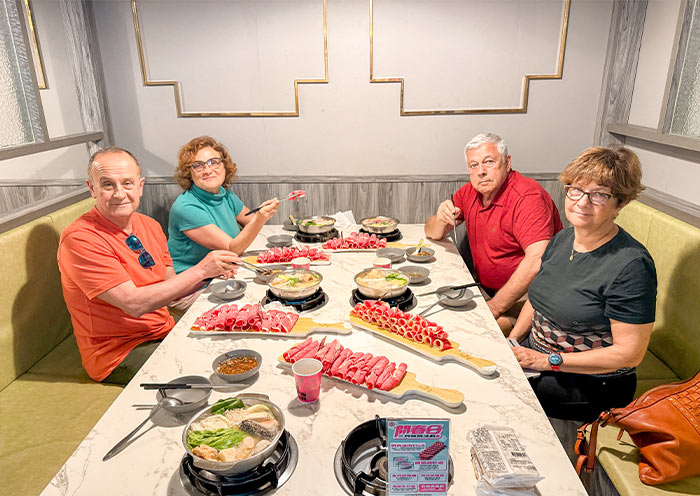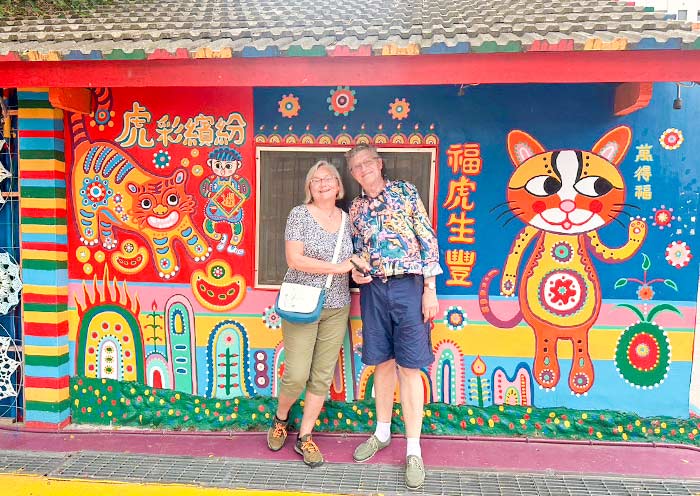4 Days Southern Taiwan Tour - Explore Kaohsiung Port & Kenting Shores
- Highlights
- Itinerary
- Price
- Trip Notes
- Accommodation
- Photos
- Reviews
Kaohsiung to Kenting Tour: From Taiwan’s Biggest Port City to Most Beautiful Beach
Discover the Best of southern Taiwan on our 4 Days Kaohsiung to Kenting Tour - a perfect blend of urban energy and coastal serenity! As your local travel agent, we'll guide you from Kaohsiung, Taiwan's vibrant port city, to the stunning Kenting Beaches.
Begin in Kaohsiung, Taiwan’s largest port city, exploring Lotus Lake, the artistic Pier-2 Art Center, and the historic Cijin Island, known for its seafood and Mazu Temple.
Travel to Kenting, Taiwan’s tropical paradise, to relax on Baishawan Beach (Most Beautiful Beach in Kenting), visit Hengchun Old Town (Best Preserved Ancient City Walls), and enjoy fresh seafood at Donggang Market. Discover stunning landscapes & Ocean views at Kenting National Forest, Eluanbi Lighthouse, Taiwan’s Southernmost Point, and Longpan Park Grassland.
Wrap up your journey with a visit to the National Museum of Marine Biology & Aquarium and Kaohsiung’s historical landmarks. This Southern Taiwan Tour is perfect for beach lovers, culture enthusiasts, and foodies! A wonderful escape, where Taiwan's bustling port city blends with Kenting's breathtaking coastal charm.
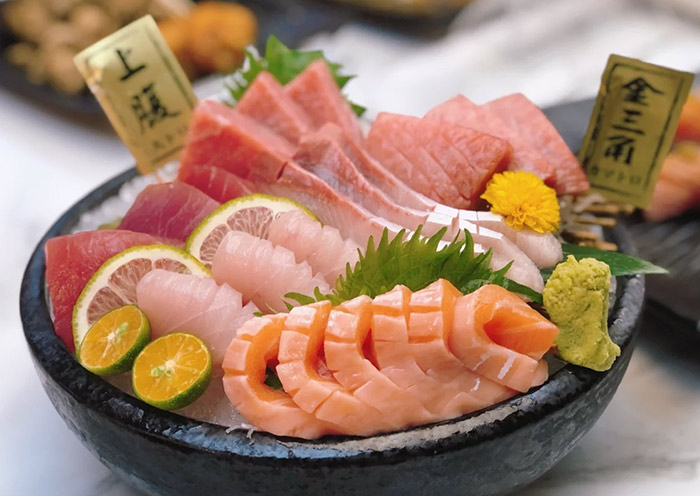
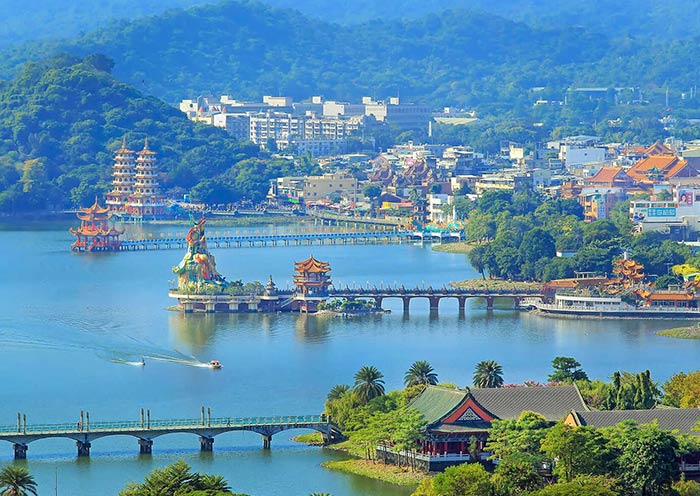
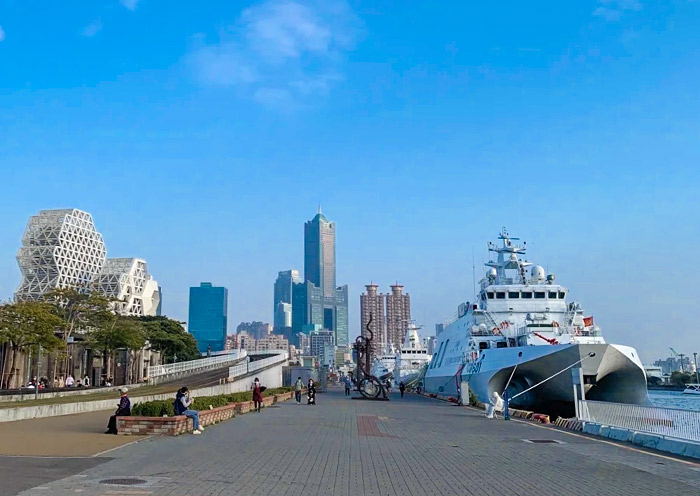
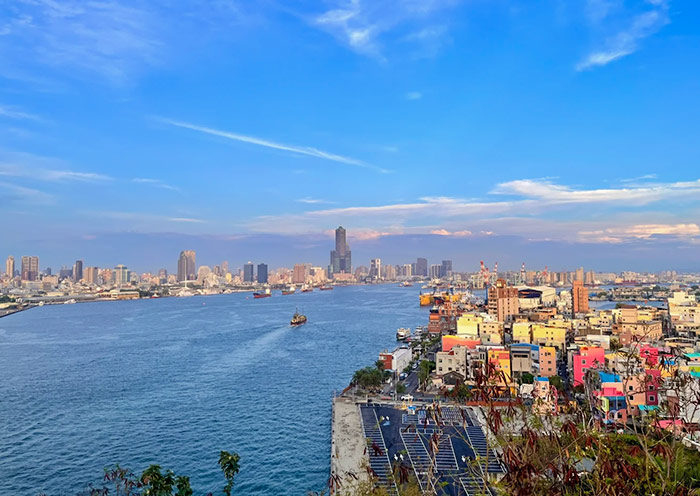
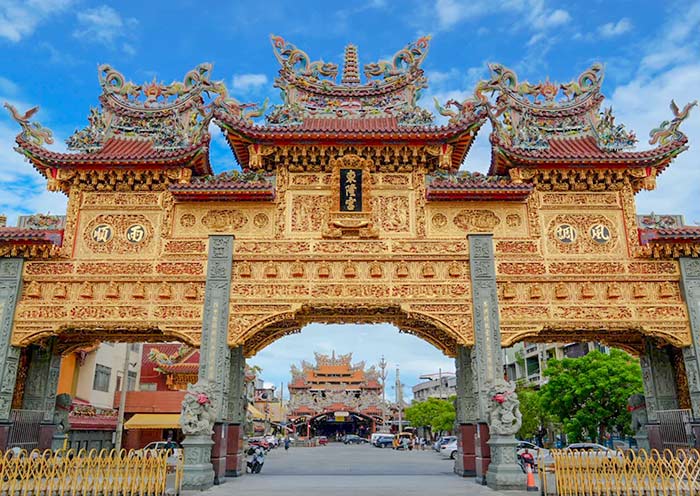
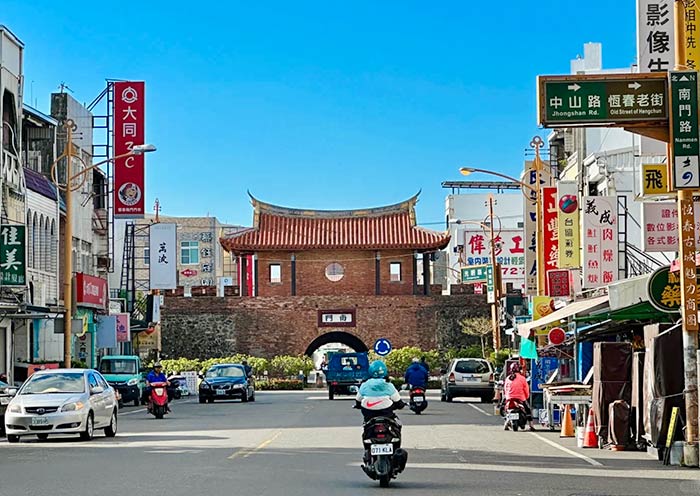
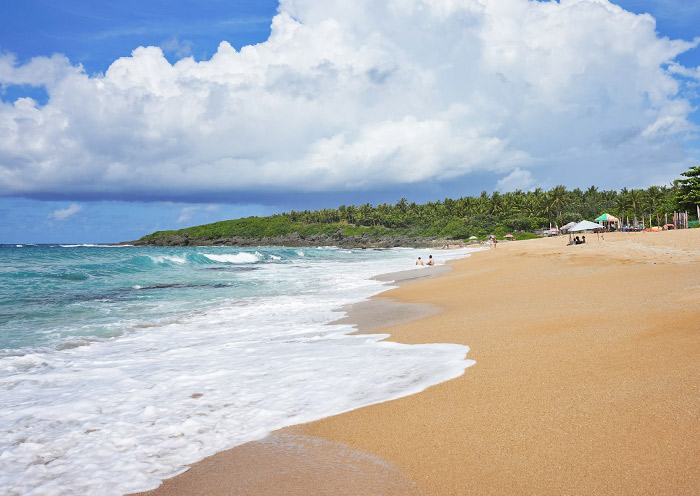
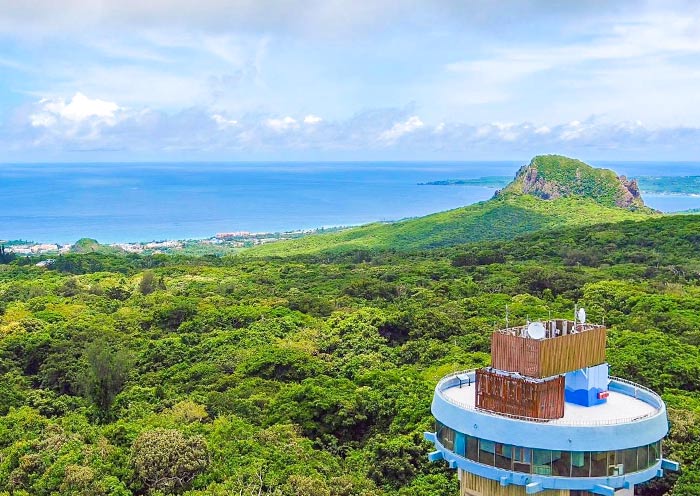
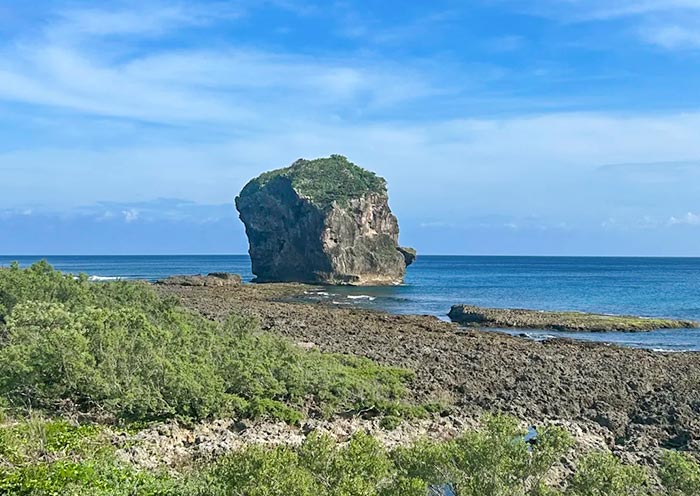

Itinerary at a Glance
Kaohsiung, Taiwan (1.5 Day)
Lotus Lake (Dragon and Tiger Pagodas), Pier-2 Art Center, Cijin Ferry, Cijin Old Street (Cijin Island), Cijin Mazu Temple, Cijin Beach, Maritime Building Café (Exterior View), Donggang Donglong Temple, Donggang Huaqiao Seafood Market, Kaohsiung Museum of History (Closed on Mondays)
Kenting, Taiwan (2.5 Day)
Hengchun Old Town (City Walls), Kenting Baishawan Beach, Kenting National Forest Recreation Area, Sail Rock, Eluanbi Lighthouse (Closed on Mondays), Southernmost Point of Taiwan, Longpan Park Grassland, National Museum of Marine Biology & Aquarium
Itinerary Day by Day
Today, you will explore Kaohsiung, the third largest city & the largest port city in Taiwan. Enjoy your time at Lotus Lake, Pier-2 Art Center, and Cijin Island from Cijin Old Street to Cijin Mazu Temple & Cijin Beach.
In the morning, head to Lotus Lake (Lianchitan), one of the must-visit spots in Kaohsiung. Every summer, lotus flowers bloom, filling the air with a delightful fragrance, hence the name Lotus Pond. It is not only a great place to admire lotus flowers but also a destination for experiencing Eastern religious culture due to its pavilions, giant statues, and surrounding city walls. When you visit Lotus Lake, you cannot miss the iconic "Dragon and Tiger Pagodas" by its shores. This pagoda was recommended by CNN, making it one of Kaohsiung's most traditional religious scenic areas.
Built in 1976, the Dragon and Tiger Pagodas stand at seven stories tall and are connected to the Nine-Turn Bridge, reflecting on the lake's surface to create a picturesque scene. It's said that there's a tradition when visiting the Dragon and Tiger Pagodas - you should enter through the dragon's mouth and exit through the tiger's mouth, which brings good luck and wards off evil. The pagoda's interior walls are adorned with exquisite ceramic artwork depicting moral stories, crafted by renowned artists. Additionally, along the shores of Lotus Lake, there are many temples and attractions like the Spring and Autumn Pavilion and the Beiji Xuantian Shangdi Temple. It is a popular spot for locals to stroll, cycle, and relax by the lake.
After that, pay a visit to the Pier-2 Art Center, a must-visit "urban memory container" in Kaohsiung. Located at the junction where Love River meets Kaohsiung Harbor, adjacent to the city landmark Great Harbor Bridge, its predecessor was the Kaohsiung Harbor warehouses built in 1973, which once stored fish meal and sugar. With industrial transformation, the old warehouses fell silent and idle until 2000, when, by chance of a fireworks display, they were transformed into a paradise for artists.
Named "Pier-2" for its location at Kaohsiung Harbor's second pier, the district is now divided into three major warehouse groups: Dayong, Penglai, and Dayi. It integrates exhibitions, music, design, and railway culture, interconnected by a waterside light rail, creating a vibrant artistic space.
Take your time to explore giant Transformers, sculptures symbolizing industry and fishing, oversized suitcases, and container blocks. Railway enthusiasts can also encounter surprises: trains occasionally pass on the tracks, the Hamaxing Pier-2 Miniature Train, Taiwan Railway Museum, Banana Train (Kaohsiung produces bananas), and other distinctive experiences allow you to relive the transport memories of the port. If you visit on weekends, the handcrafted jewelry and design brand booths at the cultural and creative market will allow you to bring back this unique local culture.
Then, transfer to Kaohsiung’s Cijin Old Street of Cijin Island by Cijin Ferry.
Cijin Old Street is located on Cijin Peninsula, the earliest port in Kaohsiung, which was once primarily centered around fishing. Later, due to the construction of Kaohsiung Port, Cijin became an outlying island. As a must-visit tourist spot in Kaohsiung, Cijin Old Street, adjacent to the Cijin Ferry Terminal, is renowned for its fresh seafood and traditional snacks. Here, you can savor grilled squid, swordfish fried cakes, pork soup, oyster omelets, peanut coriander ice cream rolls, sweet potato cakes, pig blood cake, 50 Lan milk tea, and more. The street is lined with traditional old shops and unique vendors, exuding a nostalgic atmosphere.
Near Cijin Old Street, you can find Cijin Mazu Temple (Kaohsiung's first Mazu temple; Since 1673) for Mazu culture and Minnan architecture, or stroll on Cijin Beach for its black sands and sea view, perfect for experiencing the fishing village charm and harbor allure of the port of Kaohsiung!
After the food tour in Cijin Old Street, go back to your hotel in Kaohsiung.
Optional: (Self-pay; Double-check the route & time with your guide; Ferry+Taxi back to Hotel in Kaohsiung on your own):
Hike to Kaohsiung Lighthouse (Cijin Cihou Lighthouse) for Sunset: If time permits, you can quickly hike to the white lighthouse on Mount Cihou (Since 1883; 1 km one way), catching a glimpse of the colorful houses of Gushan Fishing Port nearby, Kaohsiung Harbor, and the landmarks of Kaohsiung City (85 Building) in the distance. It is a favorite spot for locals to take wedding photos, enjoy coffee, and watch the sunset. Here, you'll understand why Cijin Peninsula is known as the "Little Jeju Island."
Free Time Ideas:
1.Love River Night Boat (The Love Boat; Self-pay): Enjoy a romantic boat trip on the Love River, the mother river of Kaohsiung, for the landmarks of Kaohsiung, such as Kaohsiung Music Center (junction between Love River & Kaohsiung Port) & Great Harbor Bridge (longest cross-port rotating bridge in Asia; next to the Pier-2 Art Center).
2.Taiwan Food Tour in Kaohsiung Night Markets: Explore Ruifeng Night Market (瑞丰夜市; More Local; Closed on Mondays & Wednesday) or Liuhe Night Market (六合夜市; Opened Daily) for local food. Double-check with locals for the opening date & time.
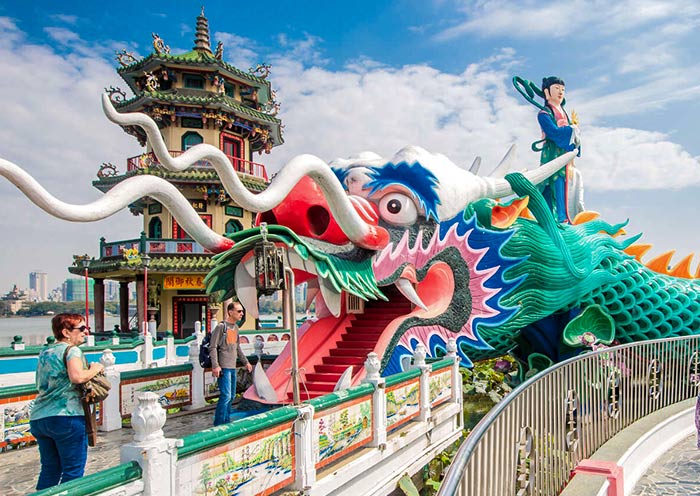
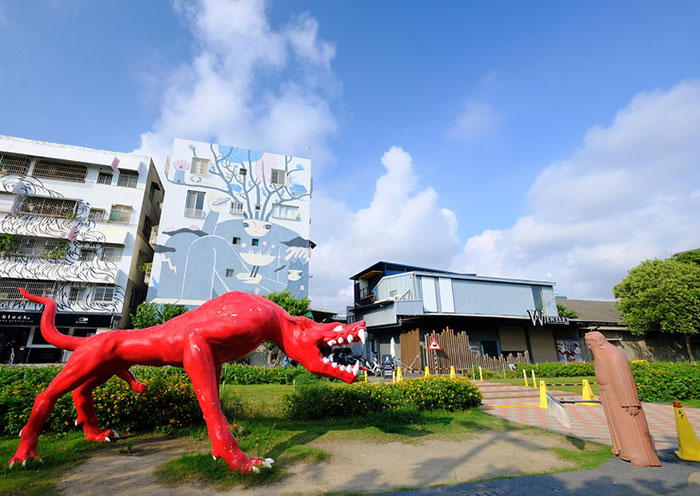
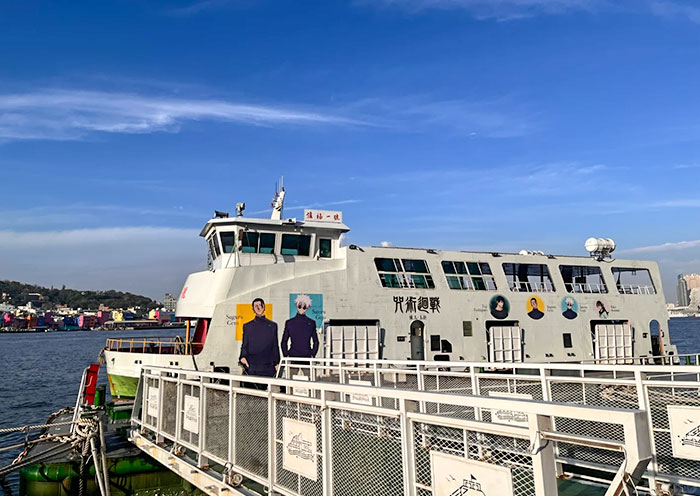
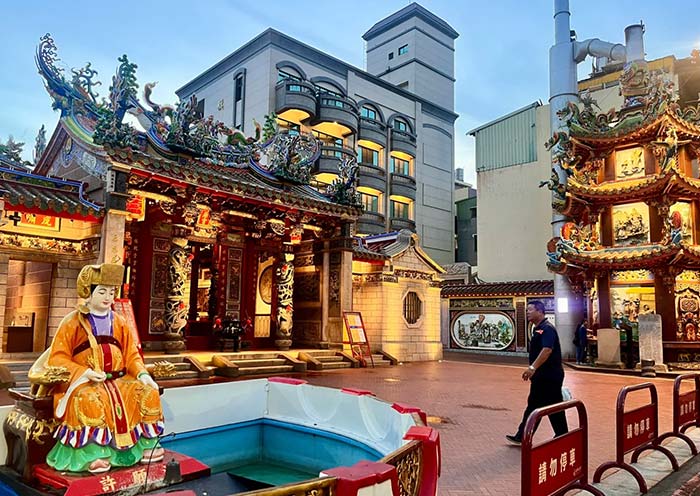
This morning, head to explore Donggang Donglong Temple (40 km; 1hour) by a quick photo stop at Maritime Building Café. At lunch time, visit Huaqiao Fish Market for seafood. In the afternoon head to Kenting and explore Hengchun Ancient City, Kenting Baishawan Beach. Overnight in Kenting.
First, you will have a quick stop at Dapeng Bay for a photo of the famous Maritime Building Café (Exterior View). It is the first "church cafe" in Taiwan, located on the sea, making it extremely unique. Its bright, goose-yellow color scheme inevitably brings to mind the architecture of churches in Spain. To reach this church cafe, one must first walk across a 304.5-meter-long seawall. Since its opening, it has become a popular photo spot on Instagram.
Then, explore Donggang Donglong Temple, which is dedicated to the deity Marquis Wen. Originally, Marquis Wen was a scholar of the Tang Dynasty who met with misfortune while traveling on imperial orders. After becoming a god, he frequently patrolled the coastal areas of Fujian and Zhejiang, protecting ships that traveled there. In 1706, a large number of sacred logs washed ashore at Donggang Beach overnight, inscribed with the words "Donggang Wen Family." Following this divine sign, devotees built a temple to honor Marquis Wen. Its most distinctive feature is a paifang (decorative archway) adorned with layers of bright gold leaf, which has a history of over 300 years.
PS: The Donglong Temple holds a welcoming ceremony for Marquis Wen (peace festival; 迎王/平安祭典) every three years, lasting eight days and seven nights. The highlight of the entire festival is the burning of the Marquis' ship on the last day. The main purpose of the "Welcoming Marquis Wen/Peace Festival" is to invoke the divine power of the great deity and other gods to dispel local evils, plagues, and diseases. Locals place greater importance on the ceremony than on the New Year, as everyone returns home to participate in the event, contributing money or effort to ensure a successful celebration. Try your luck to witness the festival.
At lunchtime, it is great to pay a visit to Donggang Huaqiao Seafood Market, which is located near the Donggang Fishery Port, one of Taiwan's major fishing ports. The Huaqiao Fish Market, the budget seafood paradise, is the most representative seafood market in the area. The market houses nearly 400 vendors offering a wide variety of freshly caught seafood, including the "Three Treasures of Donggang," such as black skipjack tuna, sakura shrimp, and saury roe, all delivered straight from the fishing port docks. Here, you can select your favorite seafood and choose to have it cooked on-site by the market's restaurants (additional processing fee required), or enjoy ready-to-eat seafood dishes, as well as other local snacks.
After lunch, time to head to Kenting (70 km, 1.5h) and visit Hengchun Old Town.This town was completed in 1879 and is the southernmost county town in Taiwan. Due to its pleasant climate and year-round spring-like weather, it was named "Hengchun"(恒春; In Chinese, it means Eternal Spring). It is not only the only remaining ancient town in Taiwan with all its city gates preserved, but also the filming location for the movie Cape No. 7 (《海角七号》). Surrounded by mountains, the town is flanked by Santai Mountain ( Tortoise/玄武) to the north, Longluan Mountain (Blue Dragon/青龙) to the east, Huxi Mountain (White Tiger/白虎) to the west, and Xiping Mountain (Rosefinch/朱雀) to the south, aligning with traditional feng shui principles.
The Hengchun Ancient Town preserves its four gates: east, west, south, and north. You can start the tour from the west gate, walking to Tianhou Temple and Monkey Cave Mountain, then to the well-preserved south gate, and finally to the east gate (where remnants of the battery, gunholes, and city wall paths can be found) to enjoy panoramic views of Hengchun Old Town. Additionally, you can savor local delicacies such as winter melon duck, Mung Bean Delicacy (绿豆馔), and mochi.
At last, reach Kenting’s Baushanwan Beach. Baishawan Beach (White Sand Beach) is a shell beach composed of marine organisms' shells, named for its fine, white sand. This beach stretches 500 meters long and 40 meters wide, making it not only the most beautiful beach in Kenting but also a famous filming location for renowned director Ang Lee's movie Life of Pi (the scene where the thin tiger departs was filmed here), making it a must-visit spot for tourists in Kenting.
Here, you can participate in a variety of water activities such as swimming, diving, sailing, and jet skiing (at your own expense). On land, you can enjoy barbecuing and camping or biking and hiking along the bicycle paths (Self-pay). Especially during sunset, when the evening glow spreads across the sea, lying on the beach and leisurely enjoying the ocean view is truly a great pleasure in life.
Overnight in Kenting. "Kenting", in Chinese means "the robust young men for cultivation," as it was named due to the Qing Dynasty's recruitment of citizens to develop the area.
Free Time Ideas:
Kenting Night Market: There is a wide variety of snacks available, such as grilled squid, banana pancakes, roasted wild boar meat, QQ egg milk, fried Oreos, cocktails, ice cream, pizza, and more.
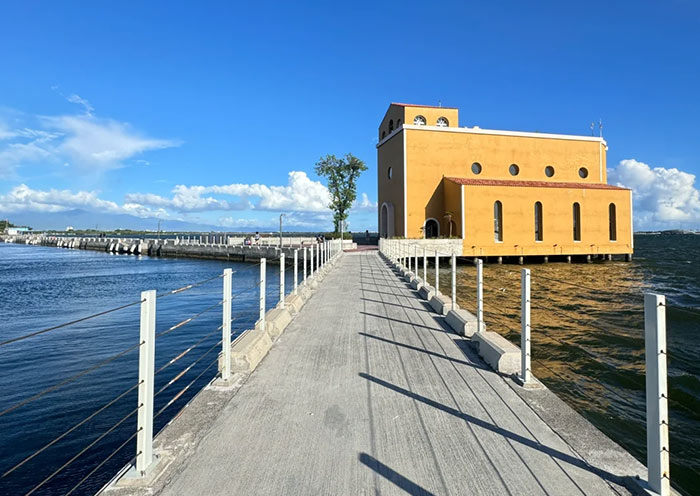
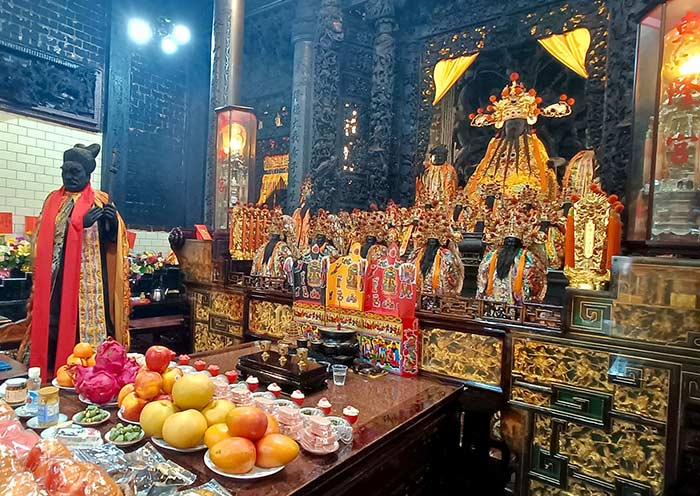
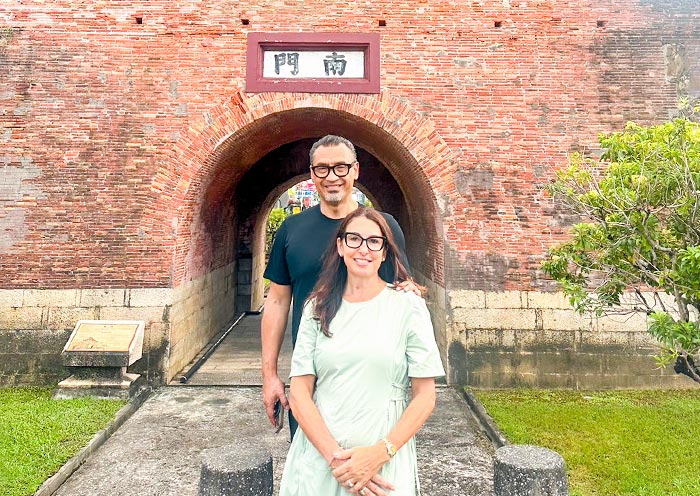
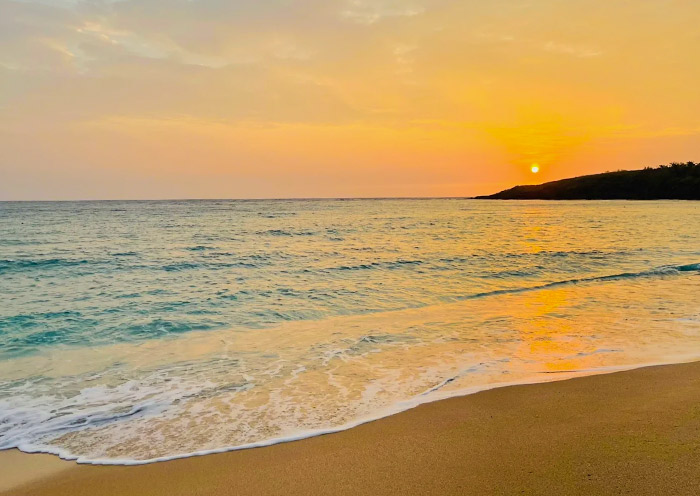
This morning, head to explore Kenting National Forest Recreation Area. At lunch time, vis Sail Rock (Fanchuangshi), Eluanbi Lighthouse, Longpan Park Grassland. Overnight in Kenting.
Taiwan's forest coverage rate reaches 61%, and Kenting National Forest Recreation Area is an excellent place to learn about the local forest ecology. This park features natural sea erosion cave trails with unique geological evolution: it was originally an ocean garden populated by stony corals, calcareous algae, foraminifera, and shells. Due to tectonic plate movements 500,000 years ago, it formed a distinctive forest ecosystem - a high coral reef forest - combining rich ecology, monsoon rainforest characteristics, and limestone topography.
Kenting National Forest Recreation Area was Taiwan's first tropical botanical garden and has a history of over a century. The park is divided into two visitor areas and 17 sightseeing points, showcasing over 1,200 species of tropical plants. The park offers two themed routes: "Botanical Stroll" (1.5-2 hours) and "Geological Adventure" (2.5-3 hours), allowing you to choose based on your physical ability and interests.
Along the way, you may see underground caves, stalactites, coral reef formations, and rare plants with exposed roots, as well as have the chance to encounter wildlife such as Formosan sika deer and Taiwanese macaques. This area is also a favorite bird-watching spot for locals. Climbing the Observation Tower provides a view of the magnificent forest canopy, Frog Rock, and the stunning Pacific Ocean, allowing you to appreciate the beauty of nature fully.
In the afternoon, transfer to Eluanbi Lighthouse via a photo stop at Sail Rock. The Sail Rock, standing at about 18 meters high, is an early coral reef rock that rolled down from above to the seashore. When viewed from a distance, the Sail Rock resembles a sailboat entering the harbor with its sail raised. The surface of the rock is covered with lush wildflowers, creating a picturesque contrast with the deep blue sea. Moreover, the Sail Rock is famous for its side profile, which bears a striking resemblance to a human face in profile. Locals playfully refer to it as the "Nixon Head," adding to its renown and uniqueness.
Then, head to Eluanbi Park for Eluanbi Lighthouse & Southernmost Point of Taiwan. The Eluanbi Lighthouse, built in 1881, is Taiwan's southernmost lighthouse and a must-visit attraction in Kenting. Facing southwest with mountains at its back and overlooking the sea, the lighthouse is constructed in the form of a fortress, with gun ports in the walls and surrounded by a moat, making it the only armed lighthouse in the country.
Located on the left side of the lighthouse is the Pacific Ocean, directly facing the Bashi Channel and overlooking the island of Luzon in the Philippines across the sea. Here, the waves meet the sky, creating a magnificent natural scenery that has long been recognized as one of Taiwan's Eight Views. The park not only features a variety of tropical coastal plants but also preserves coral reef formations. Walking along the coastal trail, you can fully appreciate the unique landscapes this area has to offer. Sure you can visit the Southernmost Point of Taiwan and take pictures there.
At last, pay a visit to Longpan Park Grassland, the most beautiful seaside grassland in Taiwan. The area belongs to an uplifted limestone plateau, where the limestone, being susceptible to water erosion, has created unique geological landscapes such as cliffs, seepage holes, limestone caves, and red soil.
Standing on the grassy plains of Longpan, you can overlook the winding coastline from a high vantage point, witnessing the Pacific Ocean showcasing its wilder side. This location is also a sacred site for viewing sunrises and starry night skies—as the first place on the island of Taiwan to greet the sunrise, it attracts numerous visitors every New Year's Eve to welcome the first light of the new year. Overnight in Kenting.
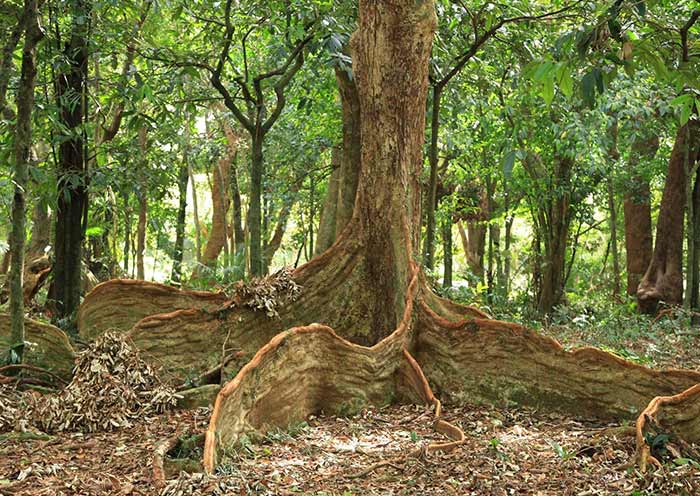
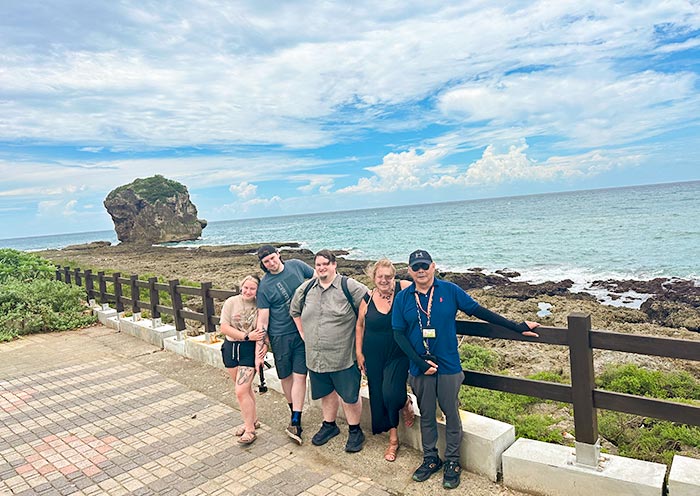
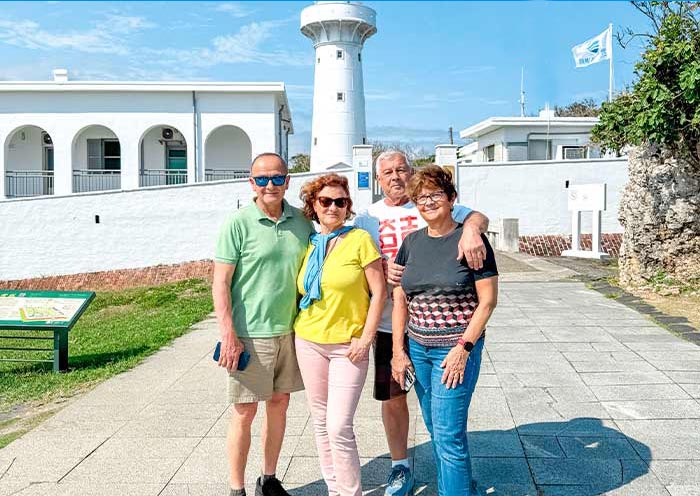
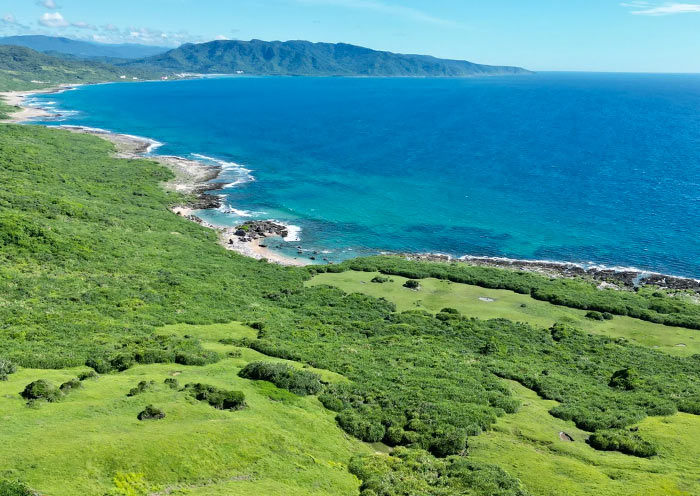
This morning, explore National Museum of Marine Biology & Aquarium. Then, head back to Kaohsiung. After visiting Kaohsiung Museum of History, time to end the tour.
The National Museum of Marine Biology & Aquarium is the largest aquarium in Taiwan, with a core focus on showcasing a diverse range of marine life and promoting marine culture education. It consists of three main themed exhibition halls: the Taiwan Waters Pavilion, the Coral Kingdom Pavilion, and the World Waters Pavilion.
The Taiwan Waters Pavilion highlights ecological connections, showcasing different aquatic ecosystems from mountain streams to the deep sea. The feeding explanations at the Ocean Pool are particularly distinctive, with guides directing visitors to observe various fish species while providing real-time explanations, offering an immersive learning experience.
The Coral Kingdom Pavilion focuses on coral reef ecosystems, allowing you to closely observe various corals and traverse the iconic, super-long underwater tunnel to experience being surrounded by marine life. Through the use of sunken ship scenes, the pavilion vividly illustrates how artificial reefs become habitats for underwater organisms.
The World Waters Pavilion expands cognitive boundaries through technological means, using 3D imaging technology to showcase fantastical scenes of ancient oceans, deep-sea areas, and polar waters, creating a futuristic atmosphere akin to a science museum.
Featuring a lineup of star marine creatures, including beluga whales, penguins, and seals, you can interact closely with these animal celebrities.
After that, head to Kaohsiung Museum of History. It was founded in 1939 as the Kaohsiung City Office by the Japanese. The main building is designed in a hybrid Japanese and Western style, offering a glimpse into the architectural style of the peak of Japanese imperialism. After WWII in 1945, the Kaohsiung City Office was taken over by the Nationalist government and renamed the Kaohsiung City Hall. Then in 1998, it became Kaohsiung Museum of History, Taiwan’s first history museum ever run by a local government.
The building of this museum itself is a landmark in Kaohsiung's history, which was one of the important historical sites of the 2-28 Incident. Tucked into neat rooms down the blonde-wood and marble hallways are photographic displays, a semipermanent 2-28 memorial, and exhibits that change quarterly. The museum often showcases the development history of Kaohsiung from "Takau" to "Kaohsiung" through exhibits focusing on water systems, maritime affairs, and railways.
It is time to end your Kaohsiung Kenting Tour. Thank you for choosing Asia Odyssey Travel (AOT) for your Asia Tour, and we are always here working for you and hope to see you again for your next trip to Asia. Safe journey!
Extension Ideas:
1.You can extend your Taiwan Tour to other cities in Taiwan, such as Taipei, Nantou, Chiayi, Taitung, Tainan, Taichung, Hualien, etc. We can customize your itinerary.
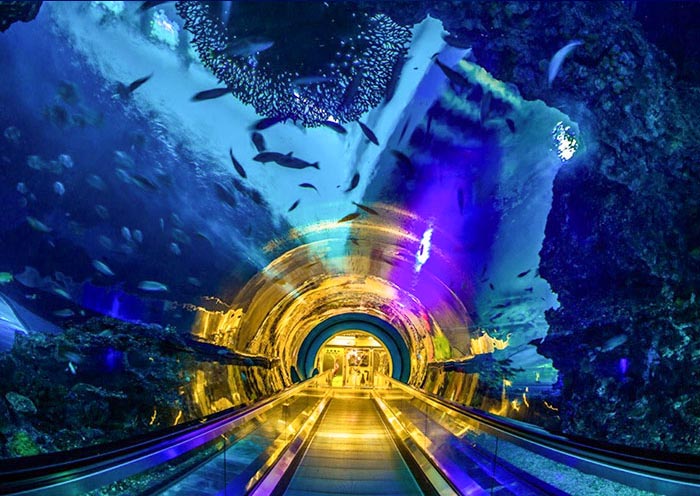
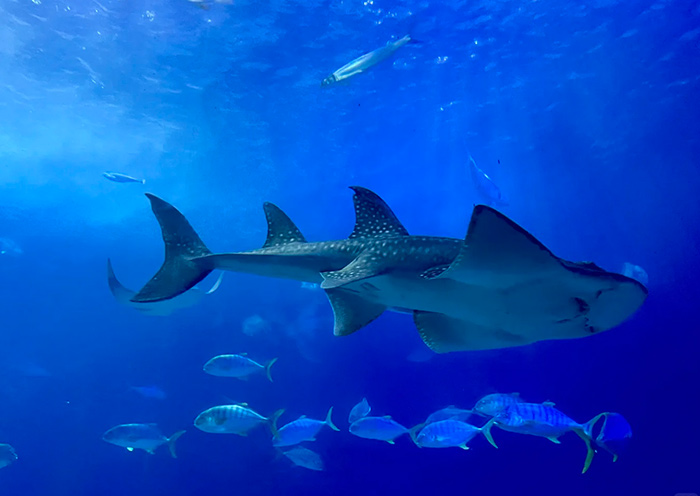


Price: What’s Included & What’s Excluded
What's Included:
What's Excluded:
Important Trip Notes for Booking Taiwan Tours
Accommodation & Hotel Condition for Your Taiwan Tour
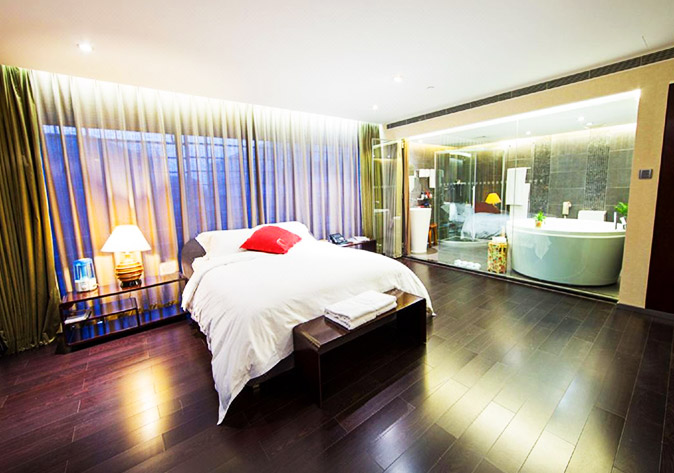

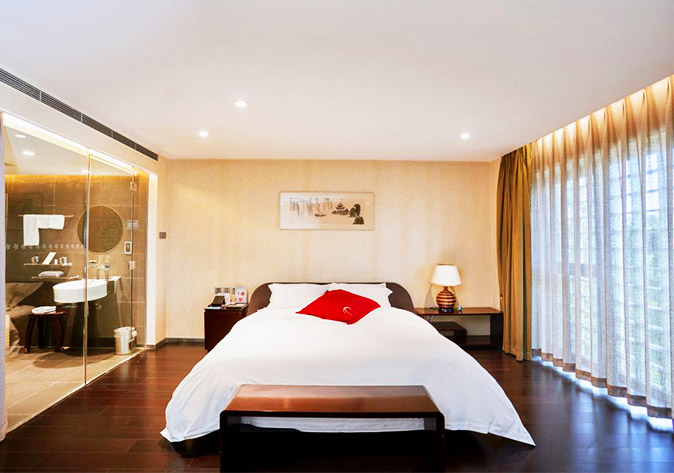
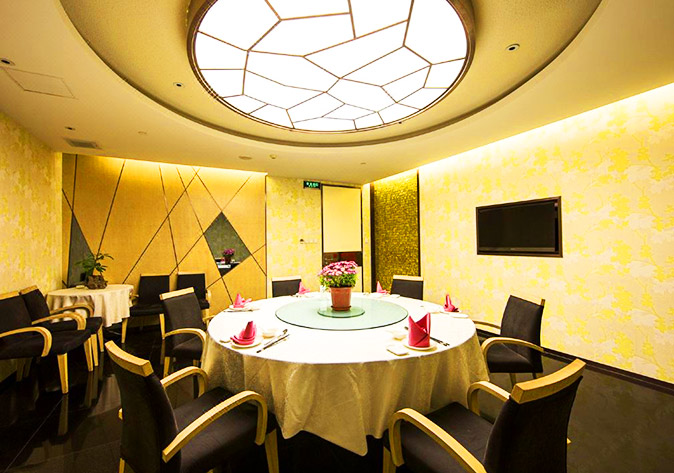
Photo Gallery for This Itinerary
Latest Taiwan Tours Reviews from Our Customers

Lujia zhang
United States
Destination(s): Taiwan
Date of Experience: Aug 09, 2025
Tour Customized by: Owen
You May be Interested in This Tour: Customized Tour

Sophie Carter
America
Every time I travel with my family, I can't help but be the most stressful one, always taking care of my parents and children. But Asia Odyssey Travel's Taiwan tour was completely stress-free. I'm so thankful! Their local team is excellent. We never had to worry about a thing, allowing us to fully enjoy Taiwan's beauty and culture. For our next family tour, Asia Odyssey Travel will definitely be my first choice.
Destination(s): Taiwan
Date of Experience: Jul 10, 2024
Tour Customized by: Isaac
You May be Interested in This Tour: 11 Days Taiwan Family Tour & Taiwan Round Island Tour

Sakura Tanaka
Japan
I had never tried oyster omelets or stinky tofu anywhere before. This trip was a total food adventure! Fortunately, they tasted good. Thanks to my consultant and guide's local hacks, my family enjoyed a good appetite at night markets in Kaohsiung and Tainan. Every local staff member we encountered was incredibly friendly, patient, and genuinely eager to make our trip special. It's the personal touch that really stands out.
Destination(s): Taiwan
Date of Experience: Jul 10, 2024
Tour Customized by: Shirley
You May be Interested in This Tour: 3 Days Kaohsiung Food Tour - Try Taiwan Food in Kaohsiung & Tainan
Price: Request
(Based on a private tour for two people. Price varies depending on program, travel date, number of people.)
Free Enquiry! You don’t need to pay for the reservation.
- United States (+1)
- Australia (+61)
- Singapore (+65)
- Malaysia (+60)
- Philippines (+63)
- Canada (+1)
- Italy (+39)
- Indonesia (+62)
- United Kingdom (+44)
- Spain (+34)
- Mexico (+52)
- Hong Kong (+852)
- Thailand (+66)
- United Arab Emirates (+971)
- New Zealand (+64)
- South Africa (+27)
- Germany (+49)
- Brazil (+55)
- India (+91)
- France (+33)
- Vietnam (+84)
- The Netherlands (+31)
- Saudi Arabia (+966)
- Ireland (+353)
- Argentina (+54)
- Switzerland (+41)
- Romania (+40)
- Pakistan (+92)
- Japan (+81)
- Portugal (+351)
- Bangladesh (+880)
- South Korea (+82)
- Puerto Rico (+1)
- Türkiye (+90)
- China (+86)
- Belgium (+32)
- Qatar (+974)
- Greece (+30)
- Taiwan (+886)
- Austria (+43)
- Poland (+48)
- Israel (+972)
- Chile (+56)
- Sri Lanka (+94)
- Nigeria (+234)
- Peru (+51)
- Colombia (+57)
- Hungary (+36)
- Nepal (+977)
- Denmark (+45)
- Bulgaria (+359)
- Norway (+47)
- Slovenia (+383)
- Sweden (+46)
- Kuwait (+965)
- Costa Rica (+506)
- Ecuador (+593)
- Venezuela (+58)
- Malta (+356)
- Croatia (+385)
- Tunisia (+216)
- Czechia (+420)
- Mongolia (+976)
- Bahrain (+973)
- Mauritius (+230)
- Papua New Guinea (+675)
- Cambodia (+855)
- Dominican Republic (+1)
- Luxembourg (+352)
- Finland (+358)
- Guatemala (+502)
- Myanmar (+95)
- Maldives (+960)
- Slovakia (+421)
- Laos (+856)
- Serbia (+381)
- Brunei (+673)
- Oman (+968)
- Macao (+853)
- Panama (+507)
- Morocco (+212)
- Jordan (+962)
- Georgia (+995)
- Fiji (+679)
- Bolivia (+591)
- Lithuania (+370)
- Bahamas (+1)
- Cyprus (+357)
- Latvia (+371)
- Bhutan (+975)
- Iraq (+964)
- Iran (+98)
- Kenya (+254)
- Jamaica (+1)
- Zimbabwe (+263)
- Azerbaijan (+994)
- Uruguay (+598)
- Estonia (+372)
- Andorra (+376)
- Cameroon (+237)
- Ghana (+233)
- Kazakhstan (+7)
- Nicaragua (+505)
- Egypt (+20)
- Russia (+7)
- Albania (+355)
- Réunion (+262)
- Montenegro (+382)
- Algeria (+213)
- Afghanistan (+93)
- Martinique (+596)
- Uganda (+256)
- Honduras (+504)
- North Macedonia (+389)
- Trinidad and Tobago (+1)
- Suriname (+597)
- Antigua and Barbuda (+1)
- Zambia (+260)
- Ukraine (+380)
- Armenia (+374)
- Barbados (+1)
- Belarus (+375)
- Palestine (+970)
- Lesotho (+266)
- Moldova (+373)
- Ethiopia (+251)
- French Polynesia (+689)
- Gambia (+220)
- Guam (+1)
- Gibraltar (+350)
- Isle of Man (+44)
- New Caledonia (+687)
- El Salvador (+503)
- Comoros (+269)
- Seychelles (+248)
- Chad (+235)
- Samoa (+685)
- Cook Islands (+682)
- Palau (+680)
- Paraguay (+595)
- DR Congo (+243)
- Solomon Islands (+677)
